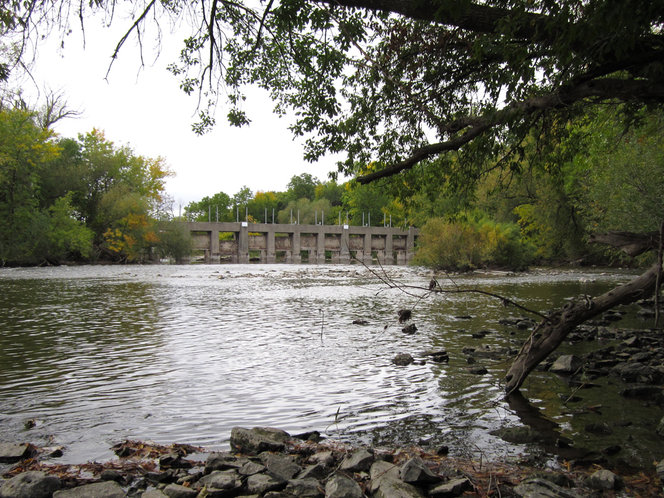The deteriorating 78-year-old Milwaukee River dam in Estabrook Park moved one step closer to repair this week.
Last week, Milwaukee County Supervisor Theodore Lipscomb inserted an amendment to the county capital projects budget to fund $1.6 million in dam repairs. The County Board on Thursday approved the budget 15-1. But County Executive Chris Abele favors the dam's removal and has signaled he may veto the budget.
The ultimate decision may rest with the courts. The dam is the subject of litigation filed by Milwaukee Riverkeeper, an advocacy group favoring its removal. A hearing is set for July before a Milwaukee County Circuit judge. The court may order the county to either fix the dam or remove it. If the county has a firm plan in place by summer and is making progress, a trial may not be necessary.
Engineers say the current dam is in poor condition but is repairable. Following a 2009 inspection, the state Department of Natural Resources ordered all 10 floodgates opened to ease stress on the structure.
The Depression-era dam has an interesting history. Before its construction, the Milwaukee River cut an S-shaped course through what is now Lincoln Park. A ledge of limestone created a wide natural pool in the river ideal for boating and swimming. But the limestone "reef" combined with the broad, shallow curves caused periodic flooding west of Port Washington Road.
By the 1930s, the county reached a decision: Blow up the reef and build a dam.
The dam kept the recreational uses of the upstream pool while draining excess water when the river was running high. When it was in normal operation, the dam maintained a 103-acre pool extending two and a half miles upstream to Silver Spring Road.
The dam has three major components divided by a small man-made island. North of the island are 10 floodgates to control water flow. Upstream to the west, a row of triangular ice breakers protect the floodgates from floating ice and trees. South of the island, and rarely seen by park visitors, the dam is a 582-foot-long serpentine wall only a few feet higher than normal water level.
They were thinking about aesthetics in the 1930s. Rough limestone blocks on the serpentine wall mimic a natural rock shelf.
Money for the $65,000 project came from the federal Civil Works Administration. A second federal program, the Civilian Conservation Corps (CCC), did the work.
A Depression-era program, the CCC provided employment for young men age 17 through 28. The men had to be single, unemployed and from needy families. They enrolled for six months at a time and could stay in the program a maximum of 18 months. Workers lived in camps (there were six in Milwaukee County), wore government-issued clothing, had three meals a day and followed strict disciplinary guidelines.
Estabrook Park's large CCC camp operated for several years. During that time, workers removed and crushed 100,000 cubic feet of limestone from the riverbed. They used some of the rock to build the dam, and the rest to pave park roads. For this, they earned $5 per month with an extra $25 sent to their families.
How did they build a set of floodgates in the middle of a river? The short answer is, they didn't. Instead, workers built the floodgates on dry ground next to the river, then dug a new channel. Workers diverted the river through the new channel while they built the distinctive "serpentine spillway" across the now-dry riverbed. The little island between the two sections was originally part of the river bank.
As the dam approaches its 80th birthday amid debate over its continued usefulness, it's worth taking a moment to admire how well the CCC workers did their job.




